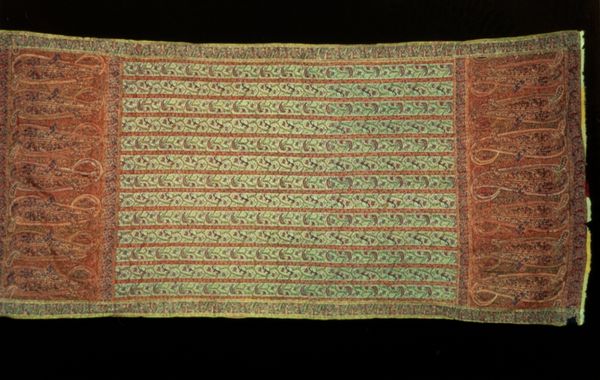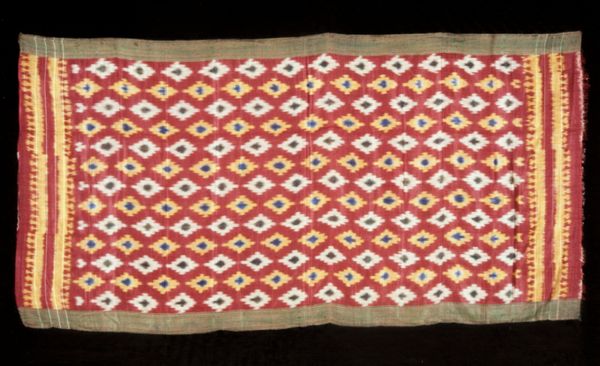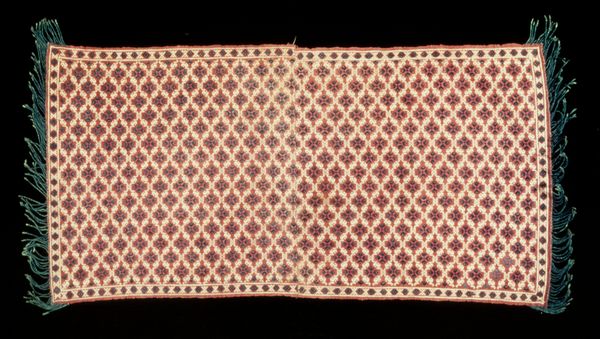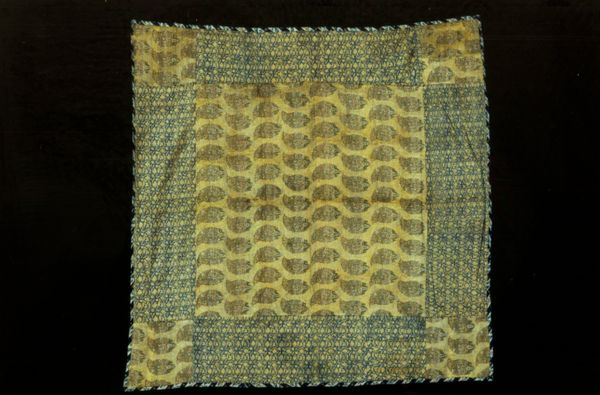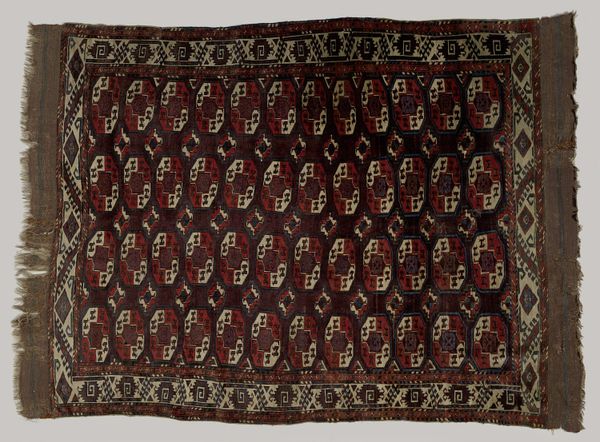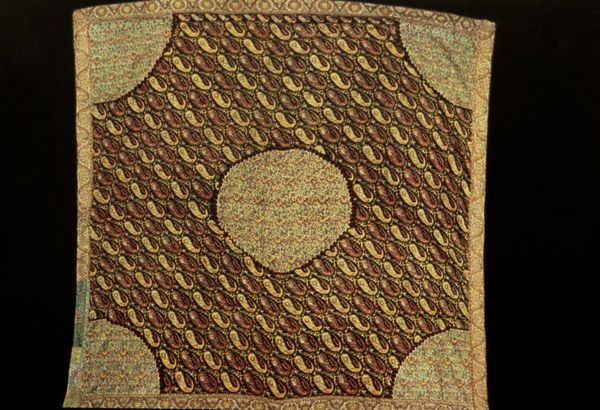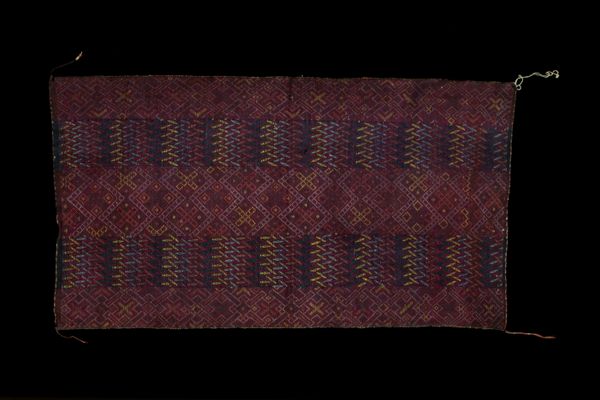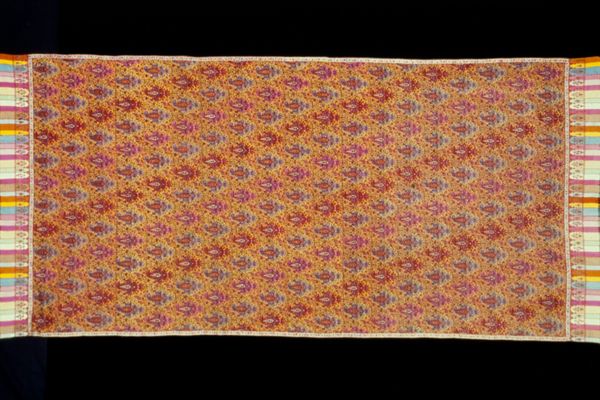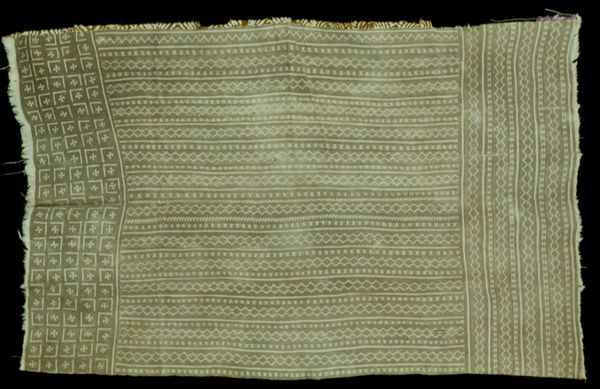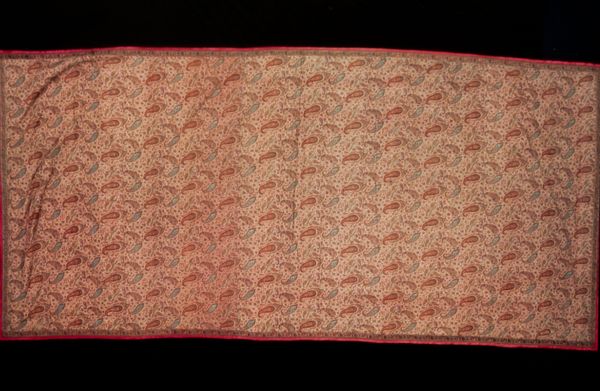
silk, weaving, textile
#
silk
#
pattern
#
asian-art
#
weaving
#
textile
#
geometric pattern
#
ethnic pattern
#
organic pattern
#
geometric
#
orientalism
#
repetition of pattern
#
intricate pattern
#
pattern repetition
Dimensions: 83 1/2 x 53 in. (212.09 x 134.6 cm)
Copyright: Public Domain
Curator: Welcome. Today, we'll be discussing a captivating textile, simply titled "Rug," created anonymously around 1875-1900. It's currently housed here at the Minneapolis Institute of Art. Editor: My initial impression is one of quiet opulence. The tightly packed paisley pattern in muted browns and greens creates a mesmerizing, almost hypnotic effect. It feels incredibly intricate and meticulously crafted. Curator: Indeed. Its meticulous design speaks to the sophisticated weaving techniques employed. The repetitive paisley motif, framed by geometric borders, showcases a masterful command of symmetry and balance. The interplay of textures and the subtle sheen of the silk are truly remarkable. Editor: Looking closely, though, the repetition of that paisley also feels potentially problematic. Its ubiquity in Western design throughout the late 19th century often signaled a kind of cultural appropriation. How might we understand its use here? Was it intended to evoke the “Orient,” or to flatten diverse cultural meanings into a single decorative element? Curator: Those are pertinent questions. Semiotically, we can examine how the paisley motif operates as a signifier, a stand-in for broader notions of "Eastern" exoticism within Western visual culture. This involves deconstructing the visual language, noticing that even the colors contribute, functioning as signs within a larger system. Editor: Exactly. Analyzing the power dynamics at play in this kind of cultural exchange becomes crucial. We have to recognize that seemingly innocuous aesthetic choices often conceal deeper social and political realities—imperialism, trade imbalances, even erasures of indigenous textile traditions. Curator: That intersection of aesthetics and sociopolitical context cannot be ignored. Analyzing the artist’s decision-making processes would allow us a new vantage point to discuss agency and intent. Editor: Thinking about agency allows me to find avenues where the piece feels vibrant. The interplay of order and irregularity prevents it from falling into complete predictability, allowing us to find both familiar and new connections to global cultural economies. Curator: A perfect final reflection. We come away with a deeper awareness of art, commerce, and society.
Comments
No comments
Be the first to comment and join the conversation on the ultimate creative platform.
